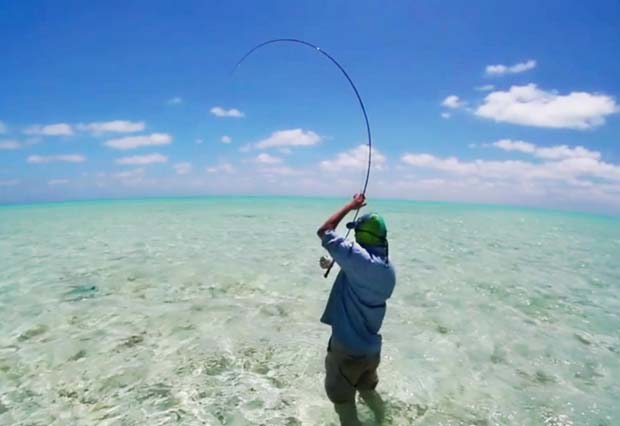As it turns out, we, and several knowledgeable anglers we caught up with, did not always follow the best equipment care-tips. Here is Sage’s list of to-dos
Fly Rods
• Take extra care when stringing your rod. Thread a loop of fly line through the guides and tip top and pull the line and leader straight through without bending the rod.
• Avoid placing or transporting your rod against metal or abrasive objects. Small nicks and scratches damage the graphite and lead to broken rods.
• When using weighted or large flies, adjust to an open casting stroke. This allows the fly to pass over the tip or to the side of the rod (a fly hitting the rod can also damage the graphite).
• Avoid severe rod angles when fighting and landing fish. Snagged flies should be broken off by pulling on the line with the rod tip pointed directly at the snag.
• Periodically wax the ferrules (where the rod pieces separate) lightly with paraffin to ensure a firm fit and proper function.
• Take the rod apart when you are done fishing to avoid stuck ferrules.
Careless could be expensive – no matter what you paid for that rod or reel
• Completely air dry your rod and place it in a cloth bag and tube before storing. The rod tubes can trap moisture, which can swell reel seats and ruin the rod finish.
• To protect the tip, it is best to bag your rod with the tip top and cork handle up.
• Occasionally clean your rod with warm water and soap and completely dry.
• To shine, apply furniture polish and don’t forget to protect the rod when finished.
How do I get stuck ferrules loose?
It’s easiest to use two people to pull the rod sections apart. Alternately, you can use rubber jar openers to get a better grip on the rod sections. Be careful that you get a good grip so you don’t slip and damage the guides. Also, make sure you don’t twist the rod sections, as this can damage the carbon in the ferrules.
Reels
• Reduce the drag pressure to the lowest setting when the reel is not in use, and store in the neoprene reel case away from extreme heat.
• Clean the reel by rinsing with cool fresh water and dry. Take care to thoroughly remove all sand and grit from the reel. Leave the frame and the spool apart and dry completely out of the reel case.
• After use in saltwater, pay special attention to cleaning the reel, as saltwater can leave a sticky residue that will harden over time if not properly cleaned and dried.
NOTE: Featured Image shows how to NOT land a fish with any type of rod. From the video “Cuba Saltwater Permit Fishing.” Image credit www.ginkandgasoline.



